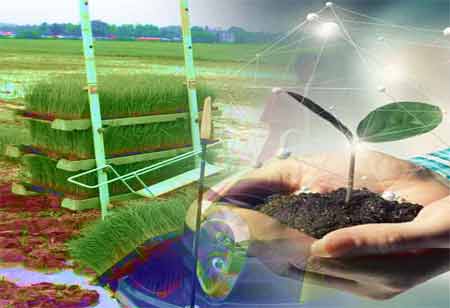Thank you for Subscribing to Food Business Review Weekly Brief
The Positive Impact of Technology on the Wine Industry
The wine industry has seen a significant transformation in recent years thanks to the deliberate application of technology

By
Food Business Review | Tuesday, January 21, 2025
Stay ahead of the industry with exclusive feature stories on the top companies, expert insights and the latest news delivered straight to your inbox. Subscribe today.

Technology has a major positive impact on the wine industry by increasing efficiency and creativity, which opens up new opportunities for international wine enterprises.
Fremont, CA: The wine industry has seen a significant transformation in recent years thanks to the deliberate application of technology. Wineries around the world are turning to technology to enhance their production, marketing, and distribution efforts, which in turn is leading to increased sales and business success.
The use of technology in the wine industry is not new, but it has evolved dramatically in recent years. Wineries leverage technology in various ways - from using sensors to monitor vineyards to data analytics to optimize production to e-commerce platforms to sell their products online. By embracing technology, wineries can streamline operations, reduce costs, and improve quality. However, wineries need to stay updated with the latest technologies to stay competitive. They must be open to new ideas and willing to adapt to a constantly changing business landscape. Technology can help wineries improve their marketing, distribution, and production processes. For example, social media marketing can help wineries reach a wider audience, while blockchain technology can help improve traceability and transparency in the supply chain.
Technology has made wineries' marketing efforts much more effective by giving them access to resources like social media, e-commerce platforms, and specialized websites that allow them to communicate with customers directly. It has been demonstrated that digital marketing techniques like target audience segmentation and messaging can increase consumer loyalty and the visibility of wine brands. Wineries can utilize data analytics to find new customers and target their marketing messages with relevant content by interacting with consumers through technology and promoting their products.
The wine industry has undergone a significant transformation with the help of technology. Gone are the days when geographical constraints or wineries would limit vineyards to a limited number of sales channels. With technology, vineyards can access new markets and sales channels, overcome geographical limitations, and streamline shipping and storage procedures. One of the most significant impacts of technology has been the ability of wineries to track their products from the winery to the point of sale using supply chain management systems and e-commerce platforms. This has enabled them to sell directly to customers, giving them greater control over the distribution and marketing of their products. In addition to these advancements, some wineries have implemented virtual reality and smartphone apps to provide interactive wine tastings and virtual tours, enhancing the overall consumer experience. These technologies have increased consumer interest and engagement with wine, improving the product's quality and flavor.
Wineries can greatly benefit from using technology to enhance their production, marketing, and distribution capabilities. By employing innovative methods such as drones for vine inspection, robots for repetitive work, and artificial intelligence for winemaking process optimization, winemakers can achieve higher revenue and overall corporate prosperity. In addition, using sensors and software for climate monitoring can further improve the quality of the wine.
Marketing is one of the most important aspects of any business, including wineries. TThe wine industry is fiercely competitive. Wineries must continuously discover new methods to reach their intended audience, engage with customers, and establish brand loyalty. To achieve these goals, wineries can leverage various marketing techniques, including email marketing, content marketing, social media, and data analytics.
Wineries can innovate their distribution strategies by incorporating cutting-edge tools like artificial intelligence, influencer marketing, supply chain management systems, and e-commerce platforms. These strategies allow wineries to stay in touch with customers, engage with consumers, and customize messaging to suit their target audience. This approach can build brand awareness, drive sales, and ultimately achieve long-term success in the wine industry by staying ahead of the competition.






